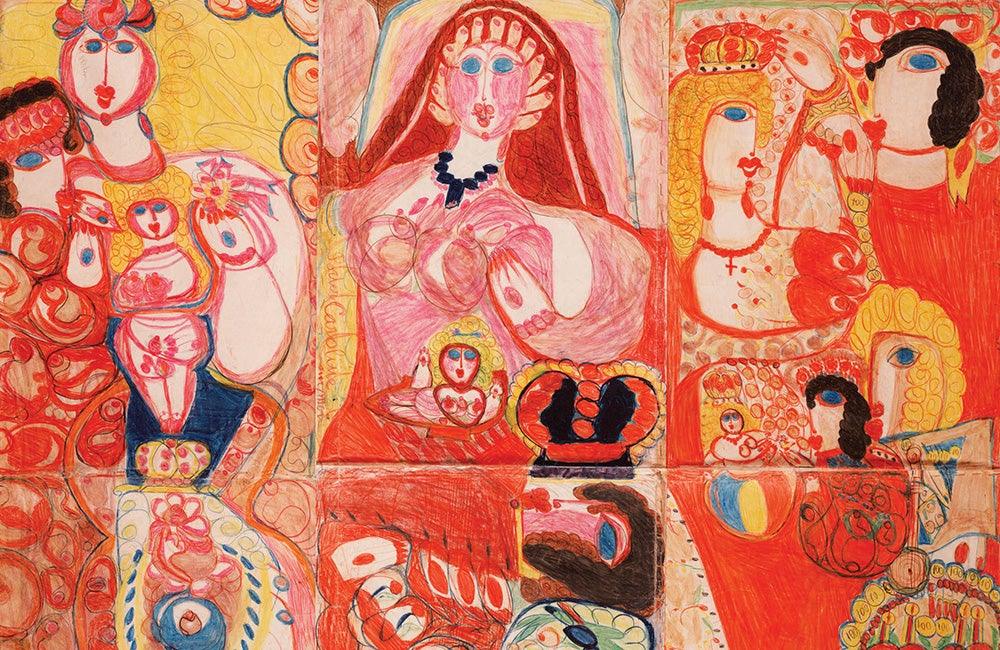First published: Fall 2012
It is now possible to access all known works by ‘Aloïse’ (Aloïse Corbaz, 1886–1964) via an online catalogue raisonné. With descriptions and commentary by Jacqueline Porret-Forel, who has interpreted Aloïse’s art since 1941 and with whom I have written the catalogue, this online resource has been edited by the Fondation Aloïse and the Swiss Institute for Art Research. It inventories over 2,000 compositions taken from 351 double-sided and 420 single-sided works, 43 exercise books of drawings or paintings and 20 scrolls, which are works of two metres or more and are composed of several scenes. The general public can now explore the evolution of an artist who, despite her longstanding fame in the field of Art Brut, has been relatively little-known in the contemporary art world.
The catalogue brings together a rich and varied corpus including works selected by Dubuffet for his Art Brut collection from 1946 onwards, the origin of Aloïse’s fame. These works – among the most complex and typical of her art – are mostly large-scale drawings and paintings, often on discarded paper such as wrapping paper, sheets of cardboard and gift wrap, which the artist would iron, mend and sew together.

They offer a wealth of mingling, sensuous figurative forms that intimately incorporate her numerous annotations. The majority present one main scene that is composed of a somewhat hieratic couple with blue-swathed eyes, often accompanied by minor scenes on a smaller scale.
The latter are themselves inhabited by a diversity of other forms and characters, bringing movement to the composition and completing the theme. They may represent other couples, children depicted as miniature women, popes and other ecclesiastical dignitaries, the Bon Enfant (the local embodiment of Father Christmas in the canton of Vaud, Switzerland), vehicles of all kinds (sledges, cars, trains, ships, planes, airships and so on), vegetal forms (trees, plants, flowers and fruit) as well as animal forms (horses, elephants, camels, butterflies, insects, snakes and so on). Frequently, all or part of the composition is enclosed in a global surround, which may not be apparent at first sight, confirming Aloïse’s taste for everything hermetic.
This is an article extract; read the full article in Raw Vision #76




